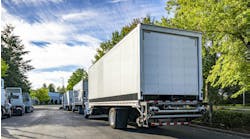Earlier this year, the Federal Motor Carrier Safety Administration announced that it was delaying its proposal to require speed limiters on heavy-duty trucks. The speed limiters would be required for trucks weighing 26,001 lbs. that are engaged in interstate commerce. Trucks would have to be equipped with an electronic engine control device that would govern the maximum allowable speed over the life of the vehicle. A supplemental proposed rule was due out in May, but I have not yet seen it.
Speed can contribute to vehicle crashes, so although speed limiters are controversial, I would not be surprised if FMCSA issued a proposed rule. FMCSA is all about making the highways safer.
It remains to be seen whether the agency will issue a rule or not, but fleets have the ability to control speeding. Electronic engine parameters can be set to govern speed at the pedal and for cruise control. Fleets often set these based on specific requirements of the product being hauled and the truck’s operating environment. Limiting speed is usually done to maximize fuel economy, but it should also be viewed as part of your safety efforts.
See also: Can speed limiters and AEB really make highways safer?
I know that some fleets are concerned that limiting speed may mean they will need to hire more drivers to continue servicing customers and that meeting delivery windows may become more challenging. However, I think that making modifications to routing can allow a fleet to maintain its efficiency, save fuel, and be safer.
Consider using route modeling software that allows you to insert a variety of variables into the system to look at new routing scenarios. In addition, speak with your customers to see if there is any leeway in their delivery windows. Ask them if it is possible to change the delivery day or time.
Optimizing routing can assist you in managing vehicle speed. And at the same time, it will keep asset utilization high, ensure that deliveries are made on time, and improve your fleet’s overall fuel economy numbers.



